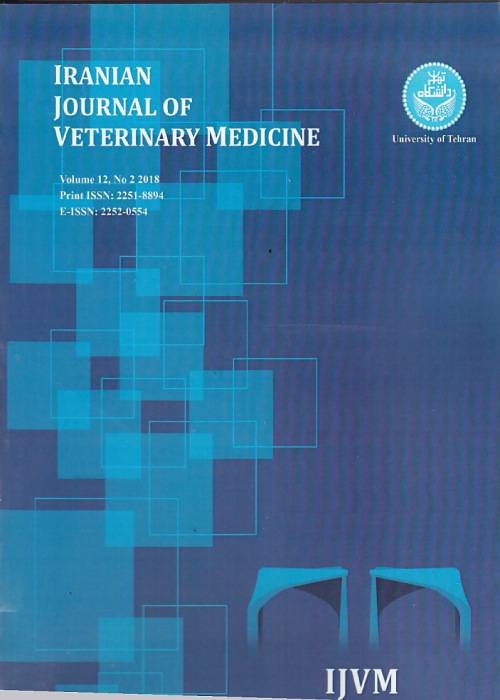Clinicopathological Diversity and Epidemiological Aspects of Canine and Feline Mammary Gland Tumors in Tehran: A Survey (2020-2022)
Author(s):
Article Type:
Research/Original Article (دارای رتبه معتبر)
Abstract:
Background
Mammary tumors are common in dogs and cats. They are models for investigating carcinogenesis and designing treatment protocols that benefit human beings. Senescence, sex, and reproductive status affect the development of such neoplasms. Objectives
In Iran’s absence of a national animal tumor registry, the present study determined clinicopathological and epidemiological aspects of canine and feline mammary tumors in referral cases of four veterinary practices across Tehran from 2020 to 2022. Here, the incidence and types of canine and feline mammary tumors are described, in addition to sex, reproductive status, age, breed, the affected mammary gland(s), grades, lymphatic invasion, and lymph node metastases.Methods
All canine and feline patients with masses in the mammary gland region were considered in this study. The resected tumors and occasional lymph nodes were macroscopically scrutinized. Hematoxylin-Eosin slides were reviewed by light microscopy and immunohistochemistry was utilized when necessary. Results
Of the 76 dogs and eight cats, 100% were females, and the majority were intact. Most patients were 10-11 years old. Purebreds were the most frequent referrals. In some patients, more than one mammary gland had developed neoplasm, i.e. 141 affected glands in 76 bitches and nine affected glands in eight queens. Tumors were presented in both chains and even on the ventral midline, with an increased preponderance of caudally located glands. Thus, the caudal-most glands, i.e. inguinal and caudal abdominal glands, constituted 31.2% and 66.7% of the affected glands in bitches and queens, respectively. Intraductal papillary carcinoma (17%) and complex carcinoma (16.3%) had the highest incidence in dogs. The most commonly observed lesions in cats were lobular hyperplasia with atypia, and duct ectasia, each encompassing 22.3% of the affected glands. Most canine neoplasms were grade I (90.3%), while grade II neoplasms had the highest incidence in cats (50%). Lymphatic invasion and lymph node metastases were seen in canine anaplastic carcinoma, solid carcinoma, and complex carcinoma, as well as feline comedocarcinoma and tubular carcinoma. Conclusion
The risk of developing malignant tumors increases as the individual ages, and generally, caudally located mammary glands in intact purebred females are at increased risk. Moreover, anaplastic carcinomas must be precisely examined, both clinically and histopathologically, for lymph node metastases.Keywords:
Cat , Dog , mammary gland , Neoplasm , Surgical pathology
Language:
English
Published:
Iranian Journal of Veterinary Medicine, Volume:17 Issue: 3, Summer 2023
Pages:
231 to 242
magiran.com/p2599620
دانلود و مطالعه متن این مقاله با یکی از روشهای زیر امکان پذیر است:
اشتراک شخصی
با عضویت و پرداخت آنلاین حق اشتراک یکساله به مبلغ 1,390,000ريال میتوانید 70 عنوان مطلب دانلود کنید!
اشتراک سازمانی
به کتابخانه دانشگاه یا محل کار خود پیشنهاد کنید تا اشتراک سازمانی این پایگاه را برای دسترسی نامحدود همه کاربران به متن مطالب تهیه نمایند!
توجه!
- حق عضویت دریافتی صرف حمایت از نشریات عضو و نگهداری، تکمیل و توسعه مگیران میشود.
- پرداخت حق اشتراک و دانلود مقالات اجازه بازنشر آن در سایر رسانههای چاپی و دیجیتال را به کاربر نمیدهد.
In order to view content subscription is required
Personal subscription
Subscribe magiran.com for 70 € euros via PayPal and download 70 articles during a year.
Organization subscription
Please contact us to subscribe your university or library for unlimited access!


